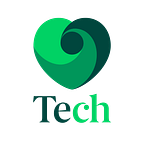Agile Frameworks and the Power of Organizational Culture
In the rapidly evolving business landscape of today, organizations are constantly seeking effective methodologies to optimize their project management practices. Agile frameworks emerged as popular solutions, providing teams with the flexibility, adaptability, and collaborative environment necessary for success. From Scrum to Lean, a range of frameworks are available, each with its own unique principles and approaches.
The framework that suits you best
In DocMorris Barcelona, a thorough evaluation of various agile frameworks was conducted to identify the most suitable methodology for our projects and our complex organization of cross countries teams in different markets. While acknowledging the strengths of each framework, we ultimately chose the Kanban method as our preferred approach to manage the end-to-end workflow in our organization.
Derived from the Japanese term for “visual card,” Kanban introduces a visual board that serves as a representation of our workflow. By rendering our work visible, we achieve a higher level of transparency and clarity, enabling us to effectively manage and prioritize our tasks. Moreover, since we have our OKRs visualized, we ensure that all the work we are doing is impacting our company goals. This way, every single task is related to an objective, and everybody knows how it is helping the organization to achieve its goals. Kanban empowers us to track tasks, identify bottlenecks, and ensure the smooth progression of our workflow. Our Kanban board provides a real-time snapshot of our work, facilitating collaboration, effective prioritization, and informed decision-making. Through the visualization of our work items, we foster a shared understanding of project progress, promoting seamless communication and alignment. You can see all the advantages in the different meetings we have. From the big meetings to define our quarter OKRs to the daily meetings of the teams.
What sets Kanban apart is its broad applicability. Although we’re a company with a solid technological core, we have discovered that the principles and practices of Kanban can be effectively implemented across all areas of our organization. For example, we were able to achieve streamlined processes and enhance collaboration in areas of the Marketing department like CRM, Brand, or Content.
To implement Kanban, we used STATIK. STATIK (Systems Thinking Approach to Introducing Kanban) is an approach used to effectively introduce and design Kanban systems. It is based on systems thinking, considering the elements of the system, their relationships, and the surrounding environment. STATIK provides a framework for identifying services, understanding demand and capacity, modeling the workflow, defining policies and service classes, and designing the Kanban system itself.
Figure 1 — System Kanban in the context of the end-to-end flow*
System Kanban focuses on the flow of work within an established service. As illustrated in Figure 1, this is only a relatively small (albeit important) part of the end-to-end flow.
- From the case study on the topic of achieving end-to-end flow with Customer Kanban by Patrick Steyaert.
The importance of Organizational Culture
When it comes to implementing agile methodologies, such as Kanban, within an organization, one key aspect that cannot be overlooked is organizational culture. The culture of an organization plays a fundamental role in the success or failure of any framework implementation. Without a supportive and agile culture, the choice of framework becomes inconsequential.
Organizational culture encompasses the shared values, beliefs, behaviours, and norms that define how people interact and work together within a company. It sets the tone for collaboration, innovation, and adaptability. In the context of agile frameworks, a strong organizational culture is vital for creating an environment that fosters agility, continuous learning, and improvement.
Once a month, in DocMorris Barcelona, all members of the company gather in a big meeting. In this meeting, the C-level management shares the status of the OKRs of the company creating a space to give feedback, ask questions and feel that we are all part of a big team. This is a great example of things to do in a company, to nurture a transparent and collaborative work culture, empowering every individual to contribute and excel. Moreover, this transparency promotes a sense of ownership and accountability among team members. It is important to note that a strong organizational culture extends beyond the boundaries of a single department or team. It permeates throughout the entire organization.
Another crucial aspect of organizational culture is the emphasis on continuous improvement. Agile frameworks like Kanban thrive in an environment that promotes a growth mindset and encourages learning from both successes and failures. A culture that values learning and encourages experimentation allows teams to continuously refine their processes, optimize workflow, and enhance overall performance.
The path to success
Organizations must prioritize the development and nurturing of a strong organizational culture that aligns with the principles of agility. Ultimately, it is the combination of a well-chosen framework, such as Kanban which allows you to manage your workflow, and a supportive organizational culture that paves the way for success.
By Sonia Saavedra and Toni Valle (DocMorris´s Agile team)
